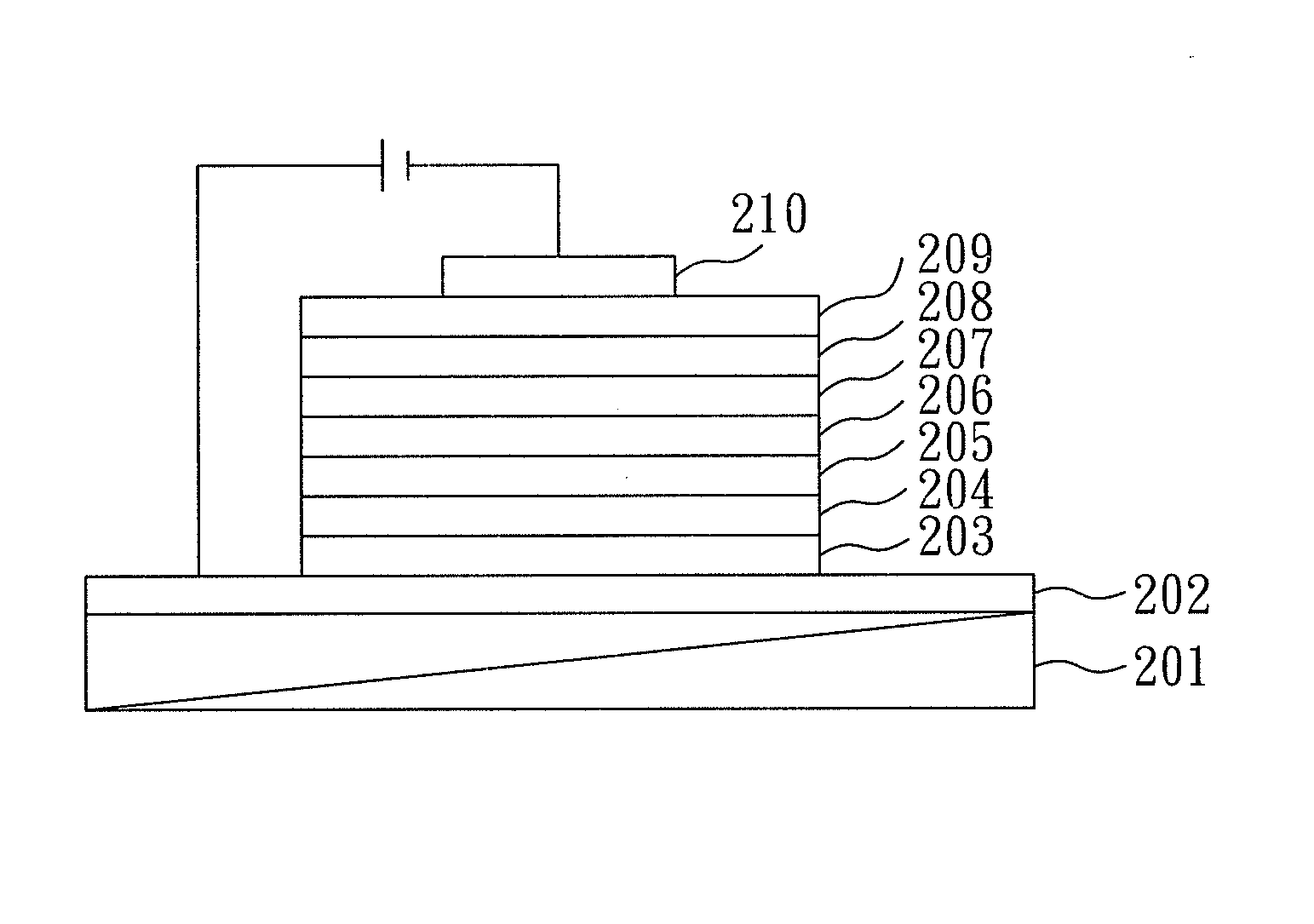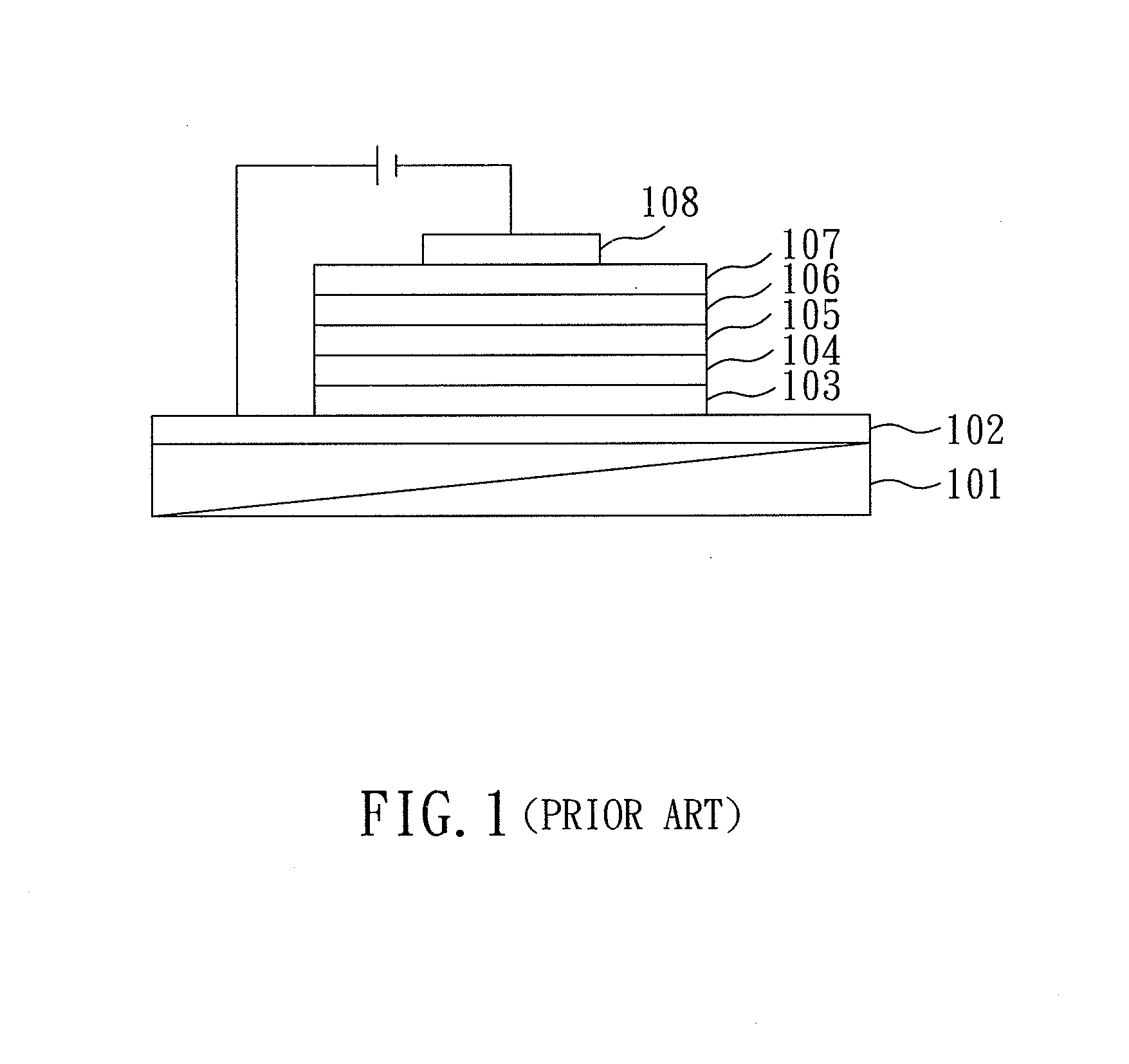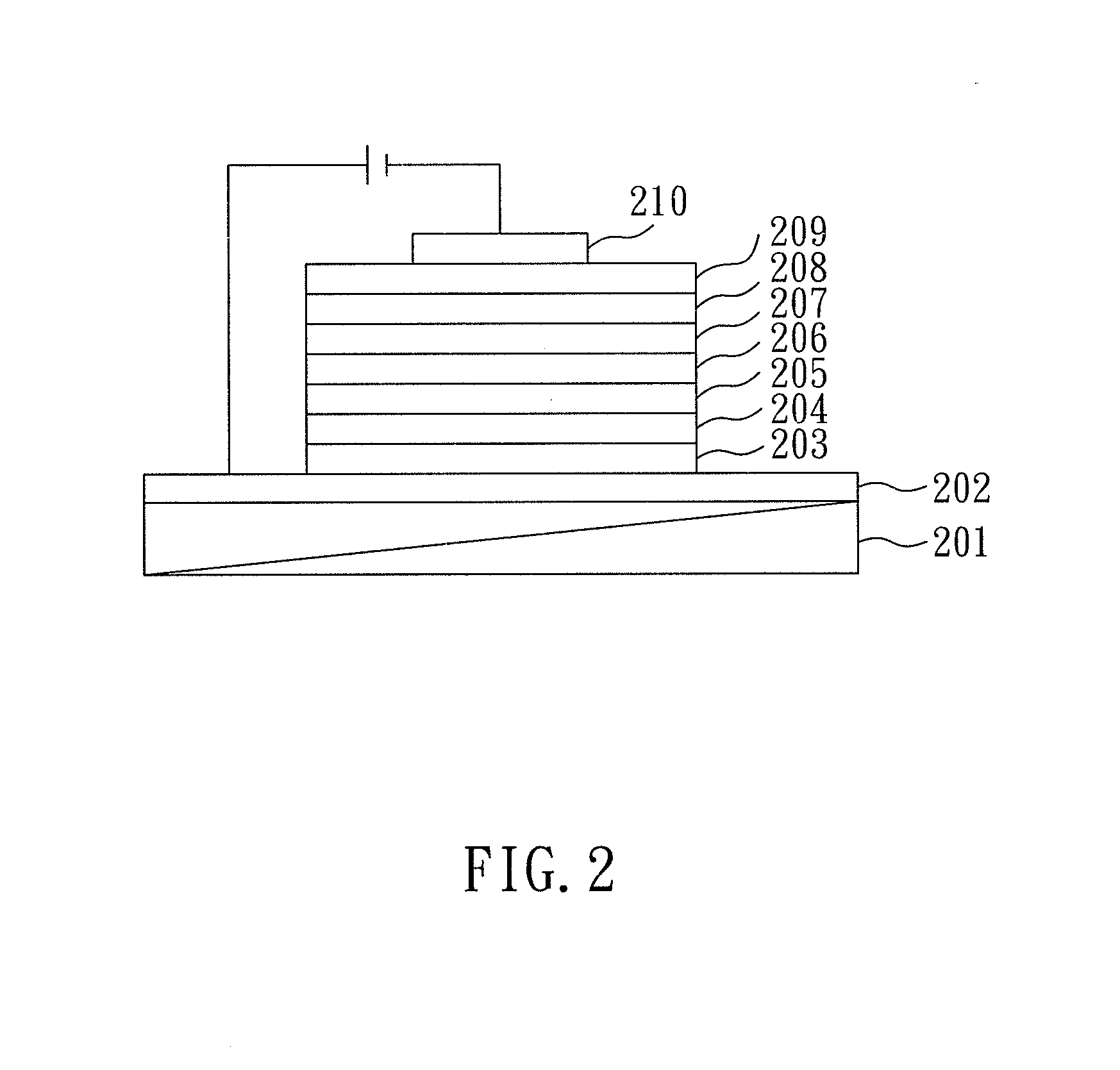Organic light-emitting diode with high color rendering
a light-emitting diode and organic technology, applied in the direction of thermoelectric device junction materials, electrical apparatus, semiconductor devices, etc., can solve the problems of high providing cost, difficult to develop an oled with excellent color rendering index and power or current efficiency at the same time, and achieve excellent color rendering index (cri) and high power or current efficiency.
- Summary
- Abstract
- Description
- Claims
- Application Information
AI Technical Summary
Benefits of technology
Problems solved by technology
Method used
Image
Examples
example 1
[0027]First, a substrate 201 is provided with a first electrode 202 formed thereon. Herein, the substrate 201 is a glass substrate and the first electrode 202 is an ITO anode having a thickness of 125 nm.
[0028]Then, a PEDOT:PSS polymer is coated on the first electrode 202 by spin coating to form a hole injection layer 203. After that, TAPC small molecules are vacuum evaporated to form a hole transport layer 204 on the hole injection layer 203. Herein, the hole transport layer 204 has a thickness of 10 nm.
[0029]MDP3FL as the deep blue dye and DSB as the azure dye are mixed in THF followed with vacuum drying to provide an evaporating source, which is then used to form a first light-emitting layer 205 on the hole transport layer 204, and therefore a first light-emitting region is provided. In the present example, the concentration of the DSB is 3 wt % of the MDP3FL, and the first light-emitting layer 205 has a thickness of 10 nm.
[0030]Then, a spacer 206 is formed on the first light-emi...
example 2
[0037]Except the spacer in the present example is made of TCTA, the OLED of the present example is provided by the same method as described in the Example 1.
[0038]The OLED provided by the present example is tested by a 3.5V driving voltage test and can emit white light. With brightness of 100 cd / m2, the luminescent efficiency is 12.5 Im / W; whereas with brightness of 1000 cd / m2, the luminescent efficiency is 7.5 Im / W. Meanwhile, the obtained white light from the OLED of the present example has a CIE coordinate of (0.43, 0.44) and has a CRI value of 94.
example 3
[0039]Except plural first light-emitting layer and plural second light-emitting layers are formed to provide a first light-emitting region and a second light-emitting region respectively, the OLED of the present example is provided by the same method as described in the Example 1, in which the material of each of the first light-emitting layer 205 is the same, and the material of each of the second light-emitting layer 205 is the same.
[0040]The OLED of the present invention utilizes a spacer disposed between the two light-emitting regions, in which the energy level of the spacer is adjusted to locate between the energy levels of the two light-emitting regions, and therefore can obtain ideal power or current efficiency and excellent color rendering index (CRI) with uncomplicated structure that can be provided by simple process steps. Compared with conventional OLEDs, the OLED of the present invention has uncomplicated structure and can be easily produced with simple process, and at t...
PUM
 Login to View More
Login to View More Abstract
Description
Claims
Application Information
 Login to View More
Login to View More - R&D
- Intellectual Property
- Life Sciences
- Materials
- Tech Scout
- Unparalleled Data Quality
- Higher Quality Content
- 60% Fewer Hallucinations
Browse by: Latest US Patents, China's latest patents, Technical Efficacy Thesaurus, Application Domain, Technology Topic, Popular Technical Reports.
© 2025 PatSnap. All rights reserved.Legal|Privacy policy|Modern Slavery Act Transparency Statement|Sitemap|About US| Contact US: help@patsnap.com



